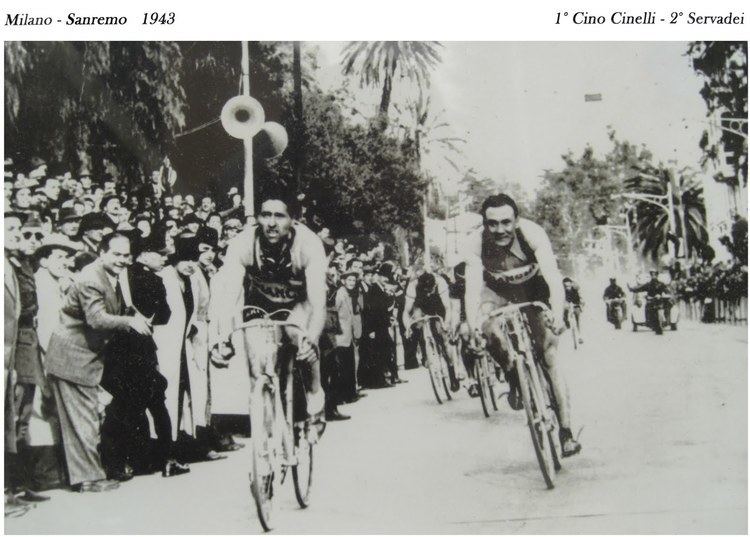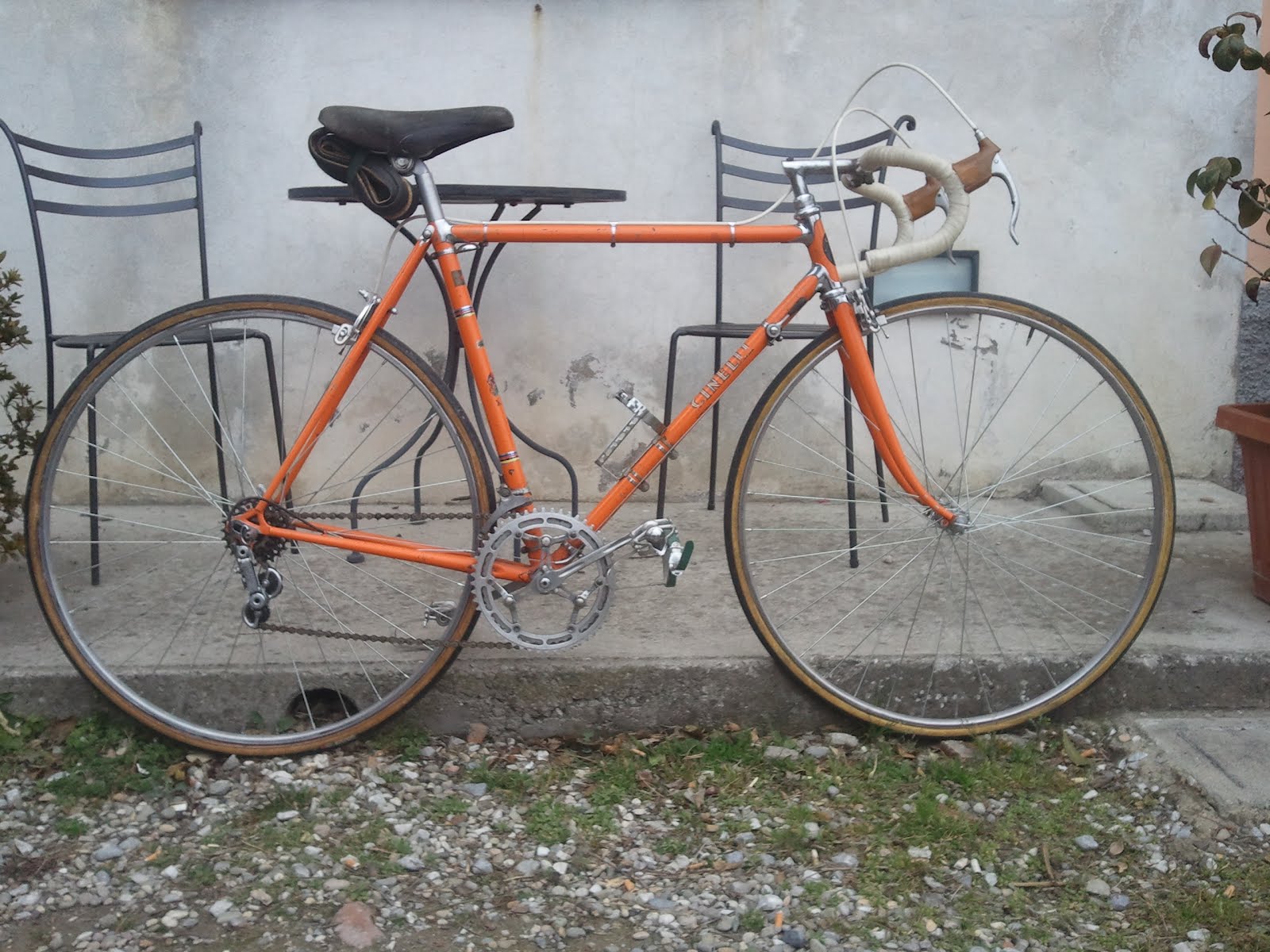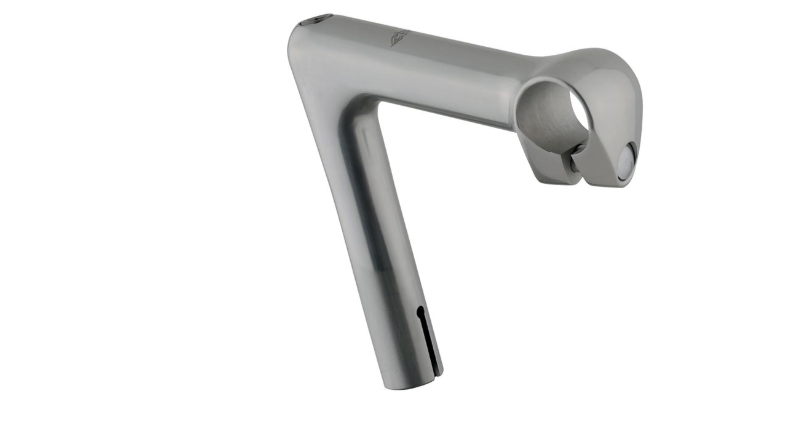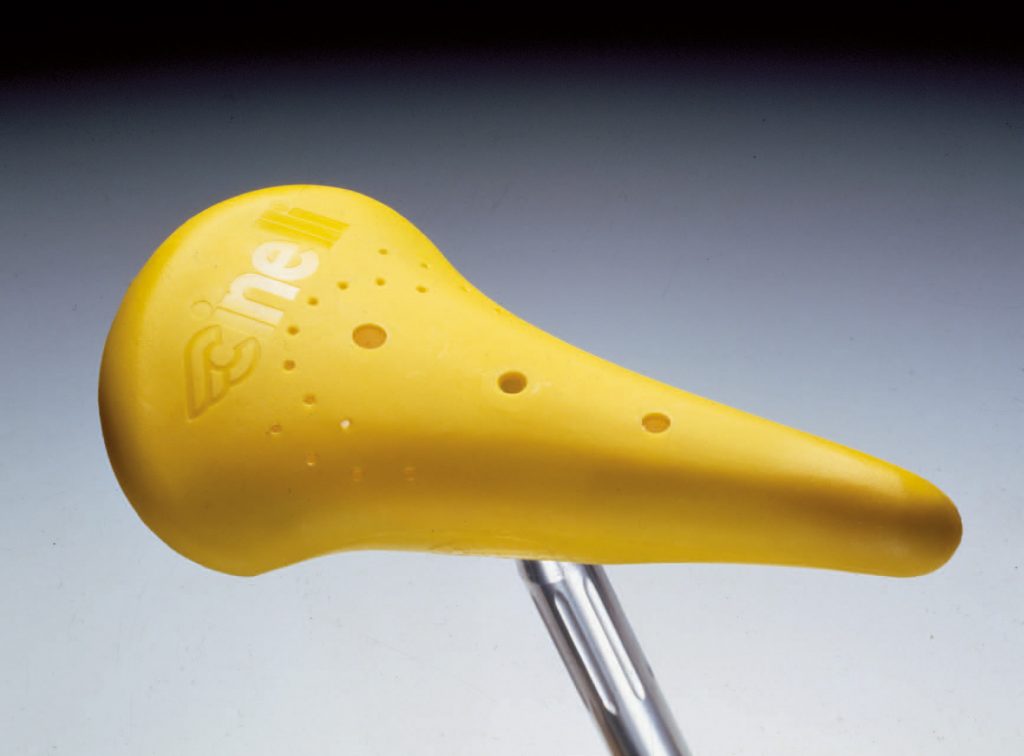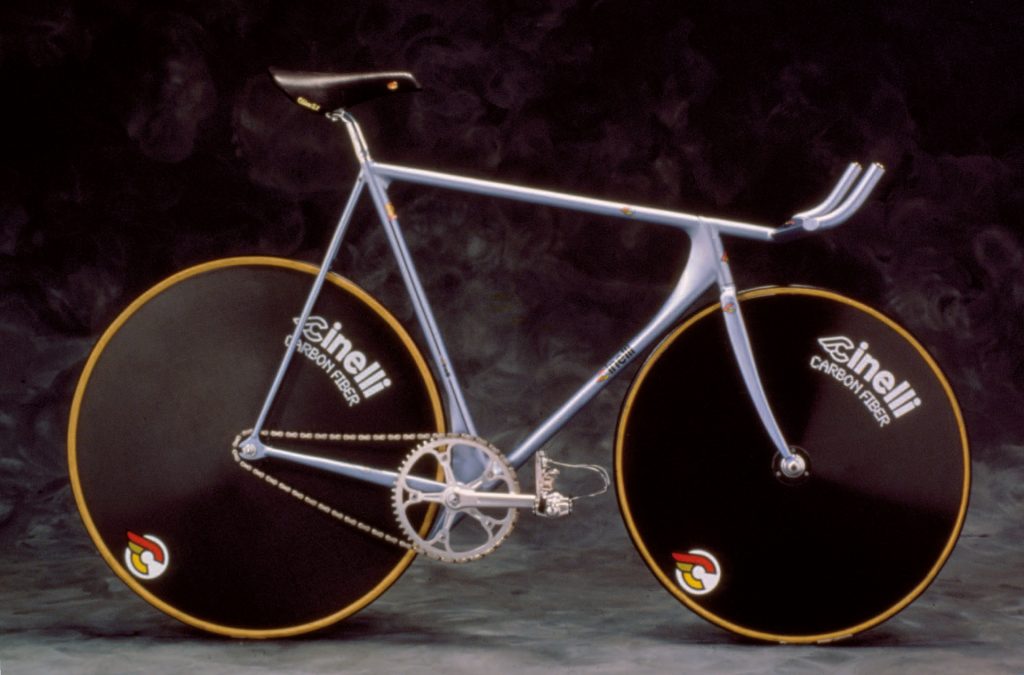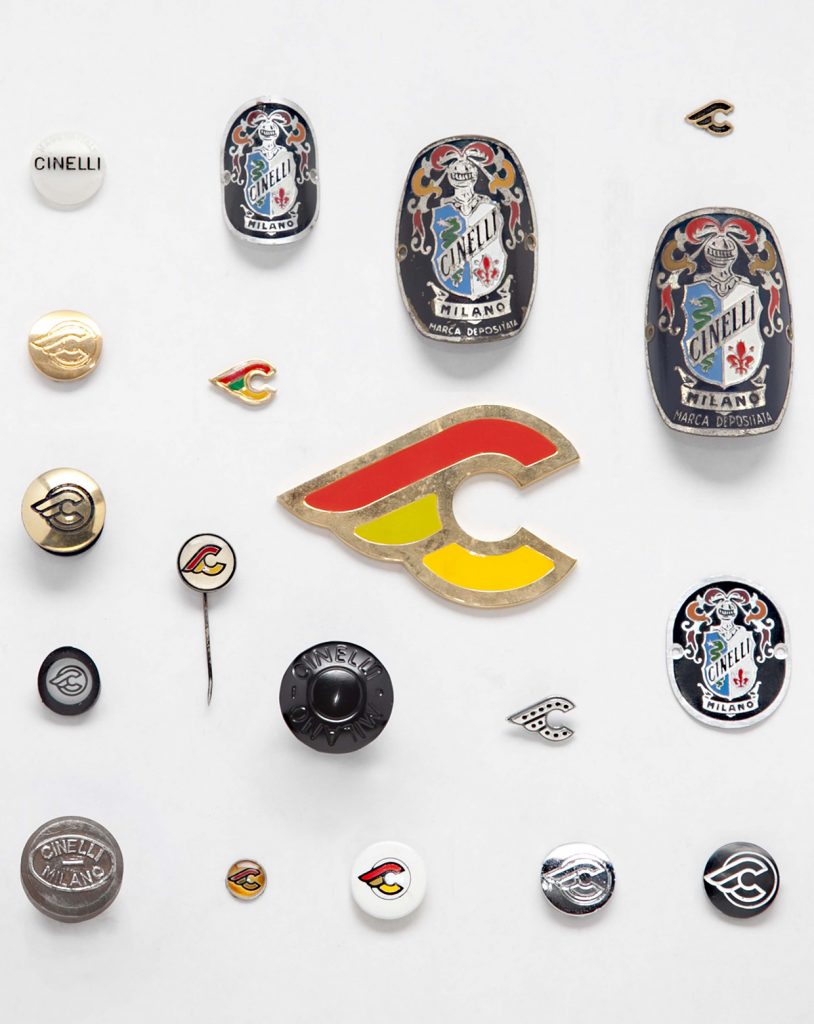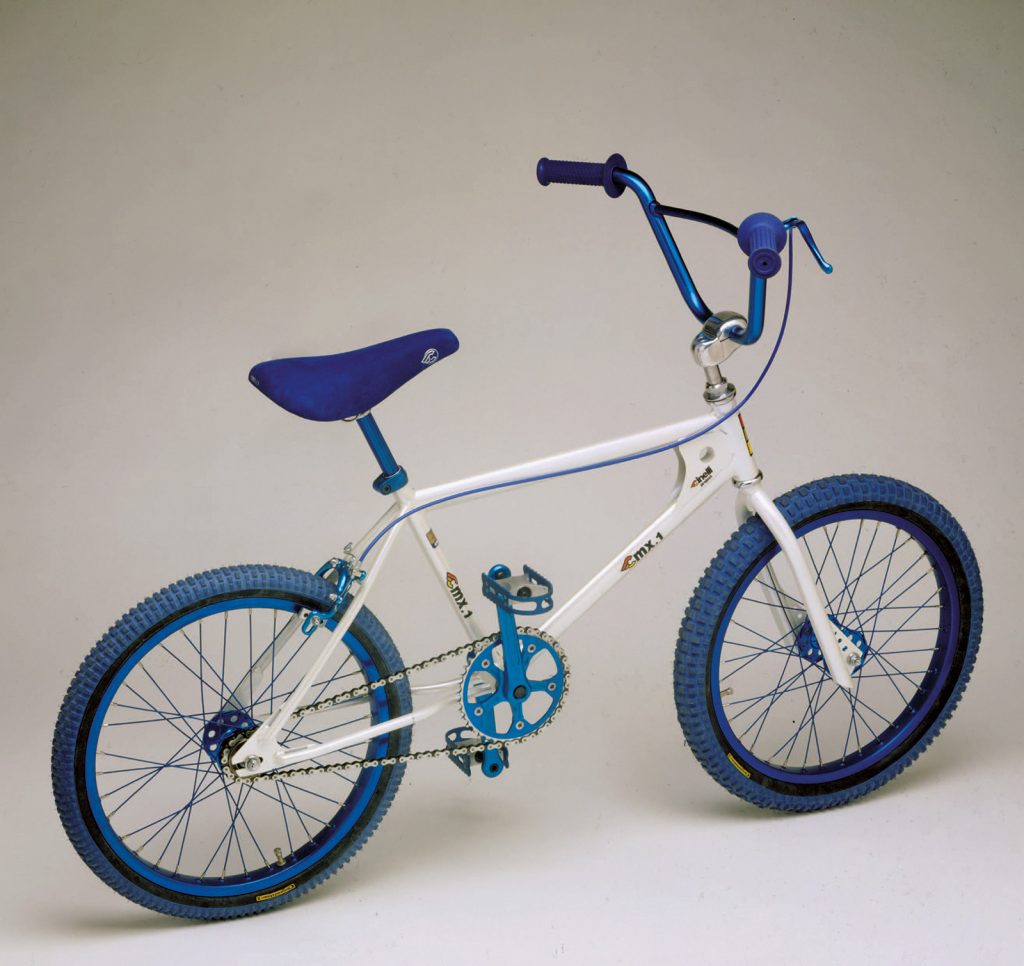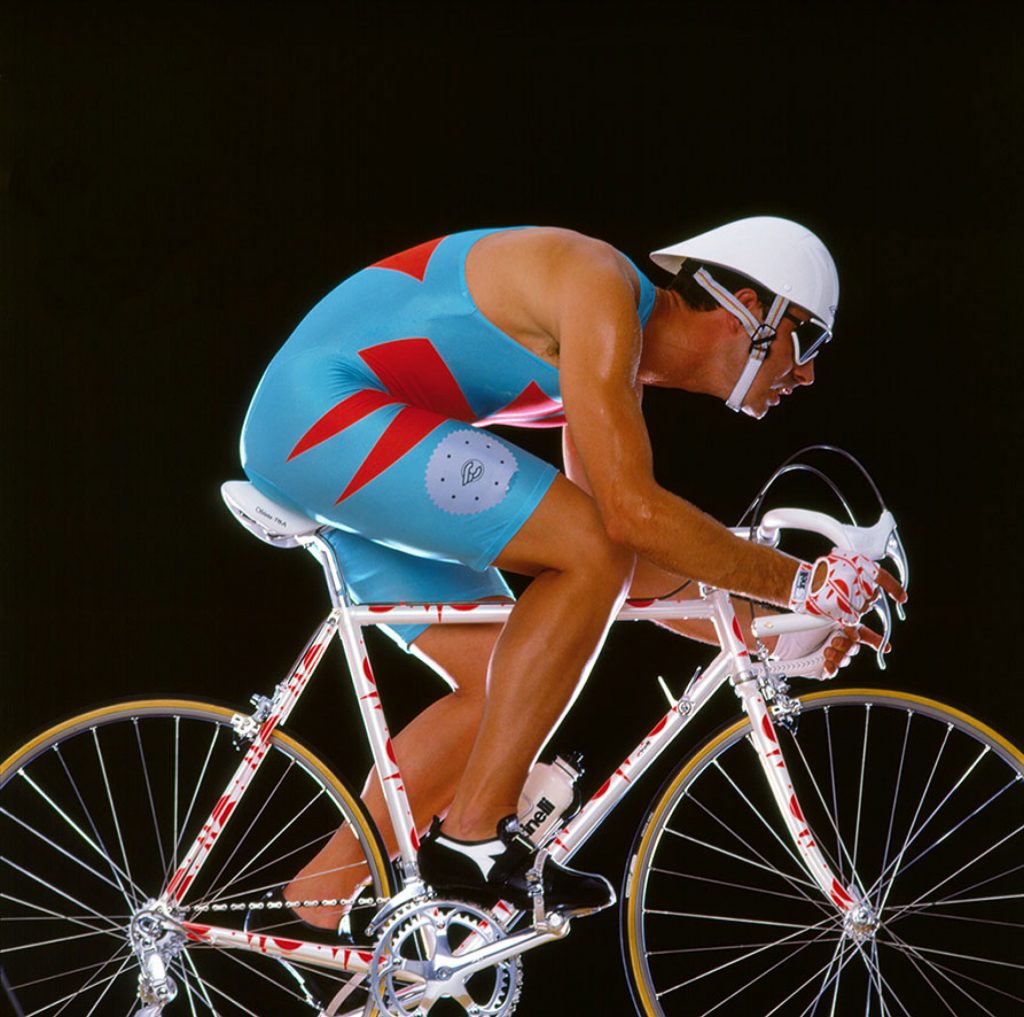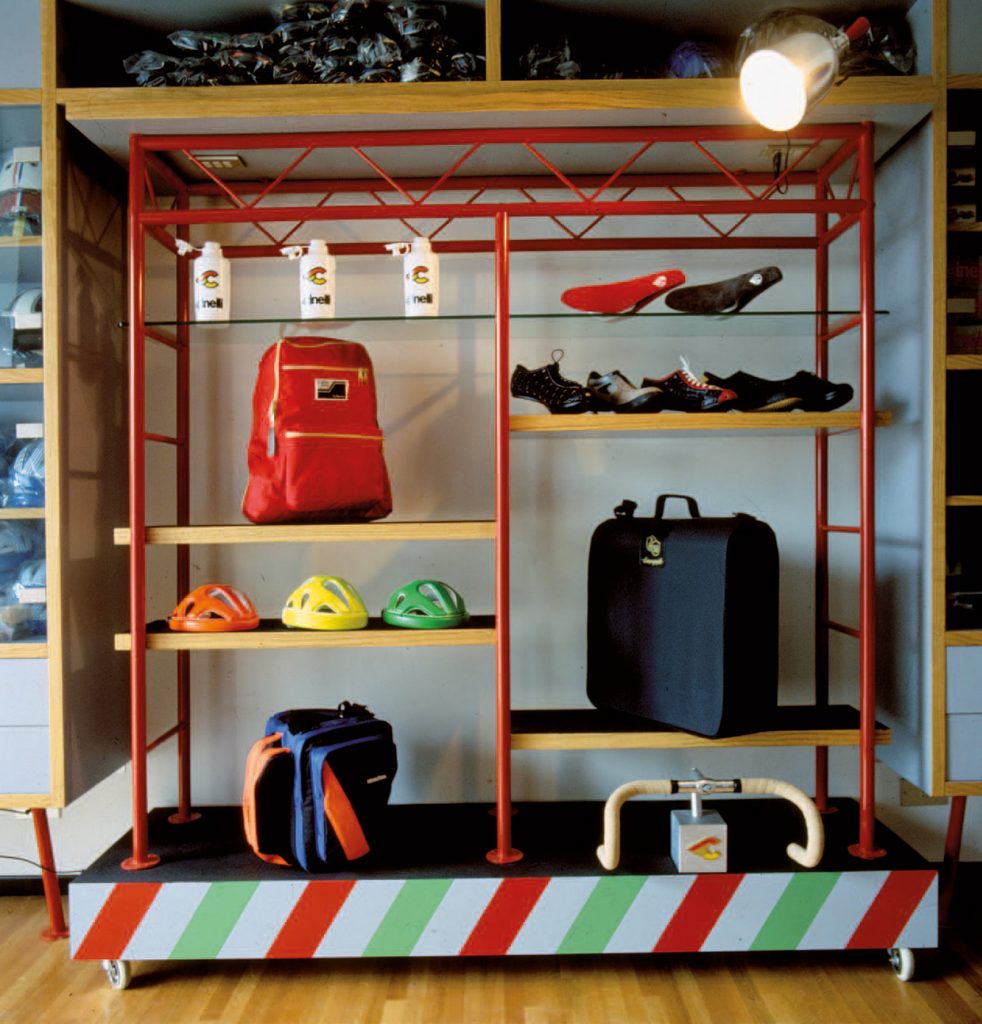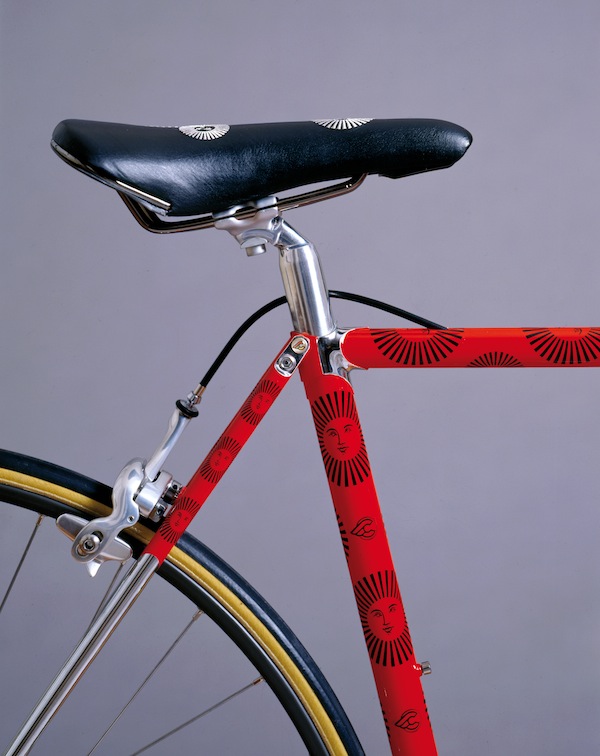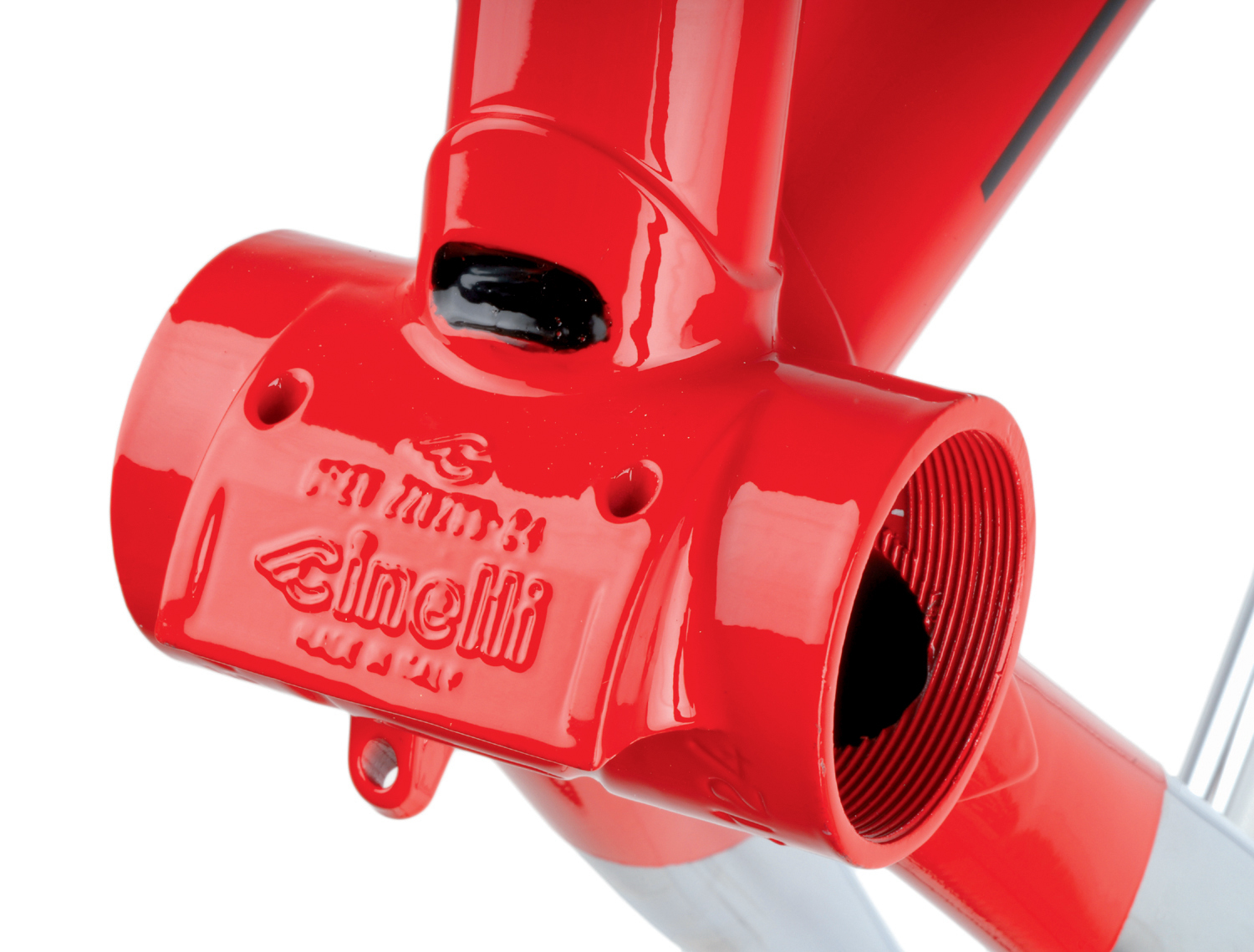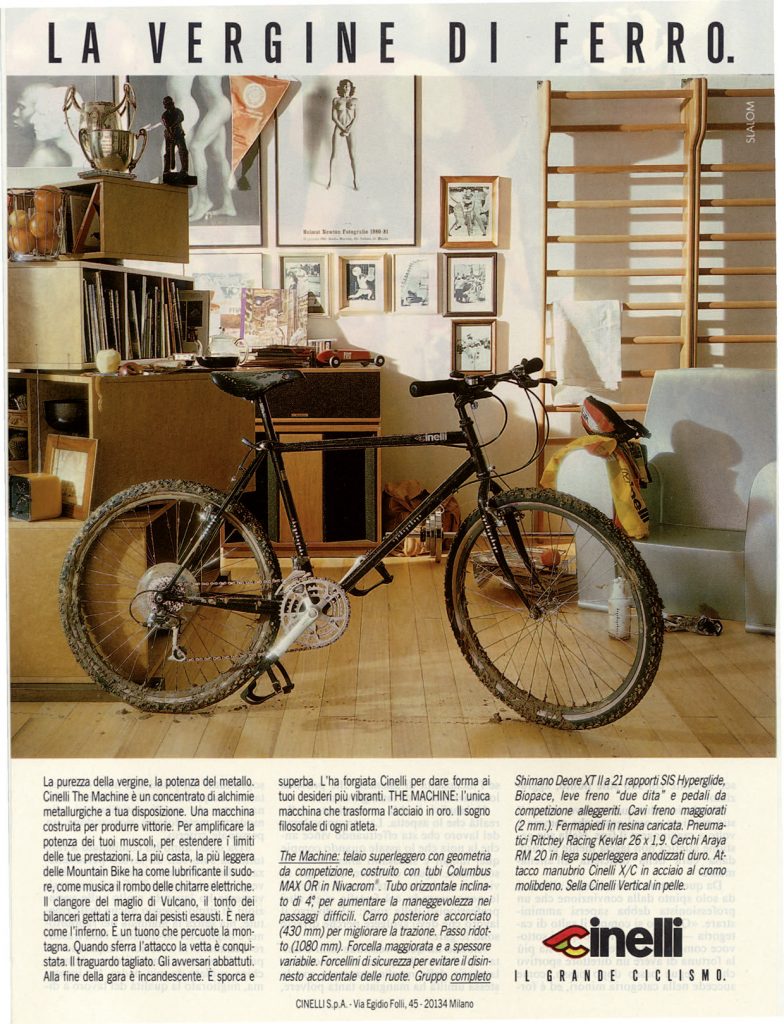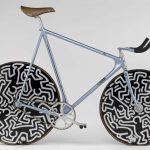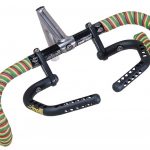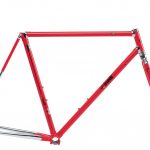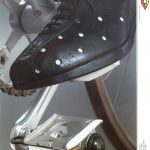The Italian bicycle brand Cinelli is a legend in the bicycle industry. It was founded by Giotto Cinelli in 1938 and initially made handlebars and stems. Later, many bicycle components were added and even later bicycle clothing.
They have also released 2 iconic bicycles: the Super Corsa and the Laser. Since the 90s, Cinelli has been an established name in the world of fixies in which it still has a large market share today.
Cinelli is also responsible for many inventions, the most important of which:
- Binda pedal straps (taken over by Cinelli - 1958)
- The fork with sloping head (1950?)
- The mounting of the saddle clamp at the back (1953), before it was in the front
- Unicanitor saddle (1962 - collaboration with Unica) - The first plastic saddle
- Bivalent hub (1960?) - The freewheel remains attached to the bicycle frame, so that the front and rear wheels are interchangeable
- M71 Pedal (1971) - The first click pedal, so earlier than the French Look
- Cinelli Model 1A stem with hidden clamp bolt
- Laser (1980) bicycle - Track pursuit and time trial model that pioneered TiG welding in bicycle frames
- Rampichino (1985) - The first mountain bike in Italy
- Cork Ribbon (1987) - Handlebar tape in cork
- handlebar extension Spinaci (1995)
- geïntegreerd stuur en stuurpen Ram (2001)
Origin of Cicli Giotto Cinelli
In 1938 Giotto Cinelli founded the company “Cicli Giotto Cinelli” near Florence in Tuscany. Initially only stems and handlebars are made and only later bicycle frames.
In 1948, Giotto's brother Cino took over the business and moved the production to Milan, where the bicycle industry was booming. Cino Cinelli was a successful cyclist who raced for Frejùs, Bianchi and Benotto, among others. He won Milan-Sanremo in 1943, the Tour of Lombardy in 1938 and 3 stages in the Giro d'Italia.
Since most of Cinelli's production consisted of stems and handlebars, Cino has never really been interested in producing frames. This is mainly to avoid competition with the other bicycle manufacturers, who were the buyers of its main products.
This makes Cinelli frames of high quality with innovative ideas such as the sloping front fork, the stem type 1A and the Unicanitor saddle.
The most famous bicycle frame that Cinelli produced in 1947 was the Super Corsa (first name was Speciale Corsa), which Fausto Coppi, among others, rode the same year.
The 1960s: the 1A stem and Unicanitor saddle
At the 1960 Olympics in Rome, Cino introduces the Cinelli 1A stem, which, together with the corresponding handlebar, will become one of the best-known products of the brand. In contrast to the stems that were on the market and that clamped the handlebars through a system of nut and bolt, this system is now with a hidden clamp bolt
This increases safety and eliminates the risk of excessive clamping of the handlebars.
From 1963, Cinelli started using metal alloys, slightly later than the competitors because they didn't really trust it at the beginning.
In the early 1960s, Cinelli collaborates with the company Unica, which results in 1962 in the first plastic saddle, called Unicanitor Together they develop the first saddle with a supporting structure in plastic and immediately lay the foundation for the modern racing bicycle saddle. The sale of leather saddles immediately collapses. The Unicanitor saddle is used by all champions of the time, including Eddy Merckx and Felice Gimondi.
In 1968, Ole Ritter sets a new cycling hour record on the track in Mexico City on a Cinelli Super Corsa. It was sponsor Benotto who asked Cinelli if they could build a frame for Ritter's attempt. That's why there were Benotto decals on the bike.
1970s: takeover by Columbus and thus a new logo
In 1978, Cino Cinelli sold his business to the Colombo brothers, owners of the world-famous Columbus bicycle tubes, and retired to his villa in Tuscany where he died in 2001 at the age of 85.
Antonio Colombo becomes the new CEO. Andrea Cinelli, Cino's son, stays in the company where he is responsible for marketing. Andrea also owns the company Cinetica that designs the Cinetica Giotto in the mid-80s in collaboration with the University of Milan. A beautiful carbon bike of which only a few have been produced because the production costs were too high.
In the late 1970s, Cinelli experiments with TIG welding that is applied to the prototype of the Laser, which will finally come on the market in the early 1980s.
In 1979, Antonio Colombo decided to replace the old logo with a more modern one. He appeals to Italo Lupi, a young architect who has also designed the logos of Prada, Fiorucci and the Olympic Games in Turin.
The Cinelli logo was one of the first logos to completely distance itself from the heraldic tradition and was frequently imitated in the coming years.
The 80's: the first mountain bike, the Laser and Keith Haring
Cinelli launches the CMX, the lightest BMX on the market.
From 1980, Cinelli started collaborating with the design agency Alchimia, composed by Alessandro Mendini, Alessandro Guerriero and Carlo Ceccariglia. In the coming years, Alchimia will design a Supercorsa, a mountain bike, a handlebar tape, a catalog and a complete clothing collection for Cinelli.
In 1981 Cinelli opens Gran Ciclismo, the first store in Italy dedicated to the world of all-round bicycles with exotic and lifestyle-oriented brands such as Oakley sunglasses and Patagonia clothing. The extraordinary interiors were designed by Franco Raggi, the lighting composed by Castiglioni. Among the customers also Sir Norman Foster and Eric Clapton.
Also in 1981, Cinelli presents the world's first Laser, the aerodynamic bicycle developed to break as many speed records as possible during those years. In the next ten years, only 300 laser frames are produced (over 100 of which are intended for professional athletes at the request of their national federations)…
In 1983 Cinelli presents a limited edition of the Supercorsa model, made in collaboration with Fornasetti.
In 1984 Cinelli patented the "Spoiler", a bracket that, thanks to its unusual shapes, allows air to flow and prevents stagnation of moisture. This invention was soon adopted by the world's best frame builders.
Cinelli is also the first bicycle supplier to bring the mountain bike to Italy and in 1985 Cinelli produces its own mountain bike: the “Rampichino”.
In 1986 Antonio Colombo meets a young Keith Haring in Milan where he is working on the new Fiorucci store. The two become friends and Colombo gives the artist an orange mountain bike and a Laser time trial bike. Four years later, Haring returns the bicycle to Colombo, who is impressed by the decorations that Haring has applied to the wheels and the horizontal tube.

